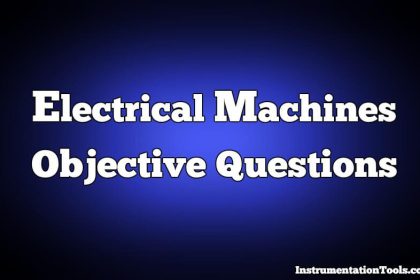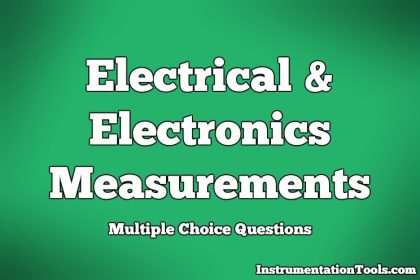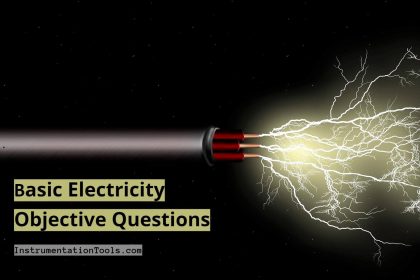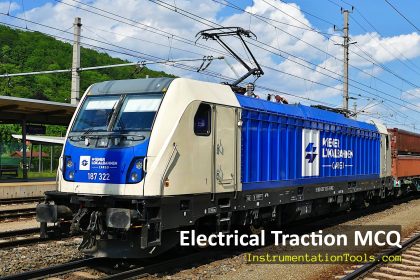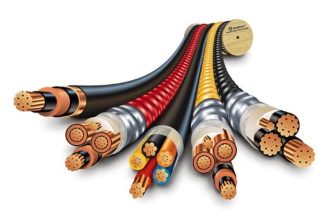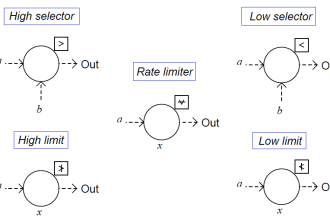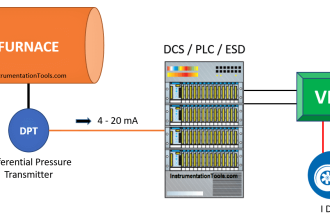In this article, we shared the network theorems objective questions and answers for electrical and electronics engineers.
Network Theorems Objective Questions
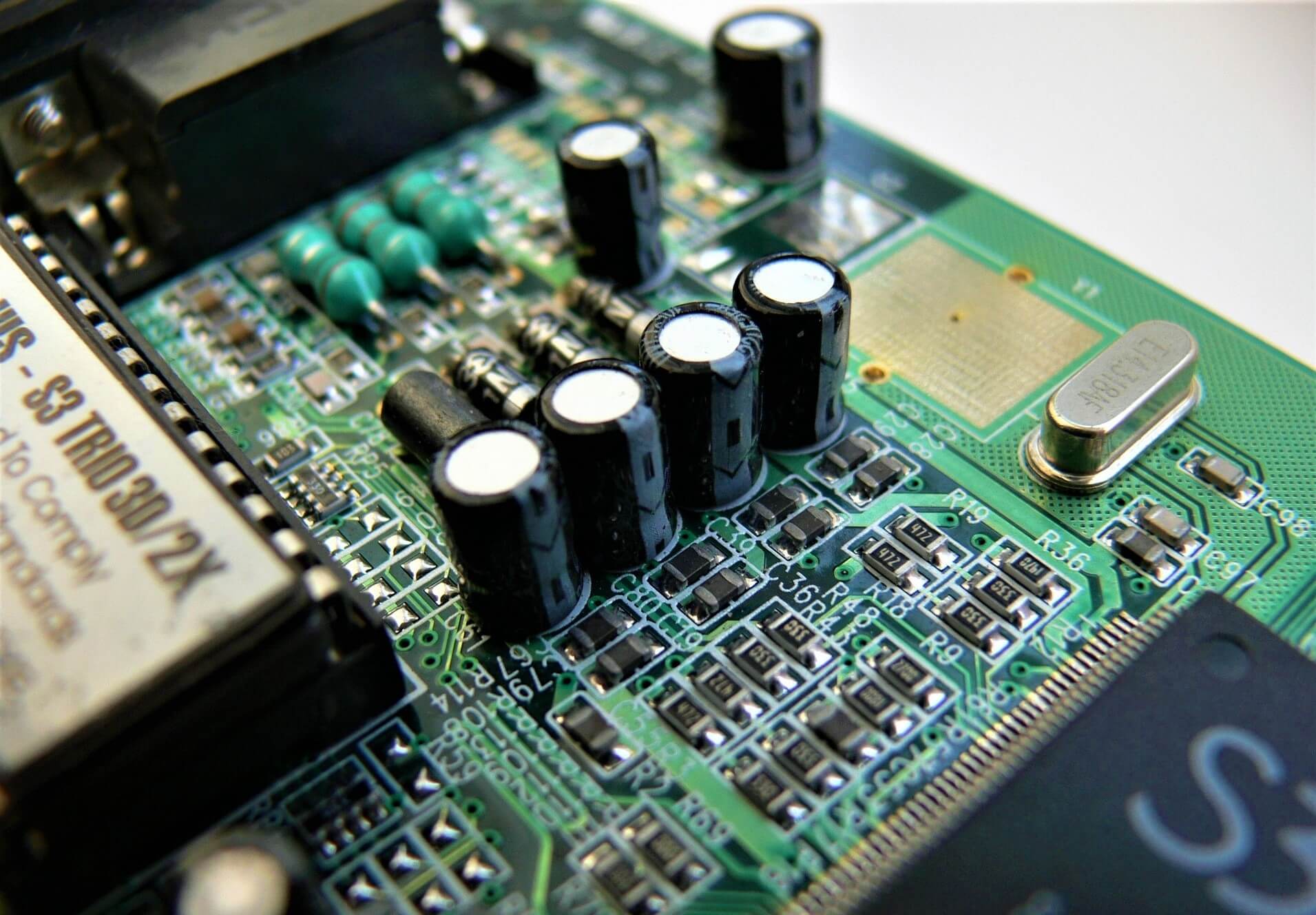
The below list provides all the multiple-choice questions related to the network theorems.
Answers are available at the bottom of the article.
1. Kirchhoff’s current law states that
| A) | the algebraic sum of the currents meeting at the junction is zero |
| B) | the total sum of currents meeting at the junction is zero |
| C) | net current flow at the junction is positive |
| D) | no current can leave the junction without some current entering it. |
2. The superposition theorem is applicable to
| A) | current, voltage and power |
| B) | voltage only |
| C) | current only |
| D) | both current and voltage |
3. A capacitor is generally a
| A) | the bilateral and active component |
| B) | the non-linear and active component |
| C) | active, passive, linear, and nonlinear component |
| D) | linear and bilateral component |
4. Which of the following is not a nonlinear element?
| A) | Electric arc |
| B) | Tunnel diode |
| C) | Heater coil |
| D) | Gas diode |
5. The number of independent equations to solve a network is equal to
| A) | sum of number of branches, chords and nodes |
| B) | the number of chords |
| C) | sum of the number of branches and chords |
| D) | the number of branches |
6. Kirchhoff’s current law is applicable to only
| A) | closed loops in a network |
| B) | electronic circuits |
| C) | junction in a network |
| D) | electric circuits |
7. What is the number of chords of a connected graph G of n vertices and e edges?
| A) | n(n – 1)/2 |
| B) | e – n – 1 |
| C) | n – 1 |
| D) | e – n + 1 |
8. An ideal voltage source should have
| A) | large value of e.m.f |
| B) | infinite source resistance |
| C) | zero source resistance |
| D) | small value of e.m.f. |
9. In a delta network each element has the value R. The value of each element in the equivalent star network will be
| A) | R/3 |
| B) | R/2 |
| C) | R/4 |
| D) | R/6 |
10. A linear resistor having 0 < R < ∞ is a
| A) | none of these answers |
| B) | both current controlled and voltage controlled resistor |
| C) | current controlled resistor |
| D) | voltage controlled resistor |
11. A circuit having neither any energy source nor emf source is called the____ circuit.
| A) | active |
| B) | bilateral |
| C) | passive |
| D) | unilateral |
12. A closed path made by several branches of the network is known as
| A) | junction |
| B) | branch |
| C) | loop |
| D) | circuit |
13. A network having one or more than one source of emf is known as ____ network.
| A) | linear |
| B) | passive |
| C) | nonlinear |
| D) | active |
14. Superposition theorem is applicable for:
| A) | Linear circuits only. |
| B) | None of these answers |
| C) | Linear and non-linear circuits both. |
| D) | Non-linear circuits only. |
15. Which of the following theorems is applicable for both linear and nonlinear circuits?
| A) | Thevenin’s. |
| B) | Superposition. |
| C) | Norton’s. |
| D) | None of these answers |
16. The superposition theorem is applicable to
| A) | linear, non-linear and time variant responses |
| B) | linear and non-linear resistors only |
| C) | linear responses only |
| D) | none of these answers |
17. A connected network of N > 2 nodes has at most one branch directly connecting any pair of nodes. The graph of the network
| A) | can only have at most N branches |
| B) | can have a minimum number of branches not decided by N |
| C) | can have an unlimited number of branches |
| D) | must have at least N branches for one or more closed paths to exist |
18. A passive network is one that contains
| A) | no source of e.m.f. in it |
| B) | only two sources of e.m.f. in it |
| C) | only some sources of e.m.f. in it |
| D) | only variable resistances |
19. Millman’s theorem yields
| A) | equivalent resistance |
| B) | equivalent voltage source |
| C) | equivalent voltage or current source |
| D) | equivalent impedance |
20. Constant voltage source is
| A) | active and unilateral. |
| B) | passive and unilateral |
| C) | passive and bilateral |
| D) | active and bilateral. |
21. The first and last critical frequency of an RC-driving point impedance function must respectively be
| A) | a pole and a zero |
| B) | a zero and a pole |
| C) | a zero and a zero |
| D) | a pole and a pole |
22. The elements which are not capable of delivering energy by its own are known as
| A) | passive elements. |
| B) | nonlinear elements. |
| C) | active elements |
| D) | unilateral elements. |
23. Which of the following statements is/are correct?
| A) | Norton’s equivalent resistance is the same as Thevenin’s equivalent resistance |
| B) | all of these answers |
| C) | Norton’s equivalent is the current equivalent of the network. |
| D) | The load is connected in parallel to Norton’s equivalent resistance and Norton’s equivalent current source. |
24. In Thevenin’s theorem, to find Z
| A) | all independent current sources are short circuited and independent voltage sources are open circuited |
| B) | all independent voltage sources are short circuited and all independent current sources are open circuited |
| C) | all independent voltage and current sources are short circuited |
| D) | all independent voltage sources are open circuited and all independent current sources are short circuited |
25. For a voltage source
| A) | terminal voltage is always lower than source emf. |
| B) | terminal voltage is equal to the source emf. |
| C) | terminal voltage cannot exceed source emf. |
| D) | terminal voltage is higher than the source emf. |
26. Which of the following is not bilateral element?
| A) | Resistor. |
| B) | Inductor. |
| C) | Capacitor. |
| D) | Constant current source |
27. A pole of driving point admittance function implies
| A) | zero voltage for a finite value of driving current. |
| B) | an open circuit condition. |
| C) | zero current for a finite value of driving voltage. |
| D) | none of these answers |
28. For maximum transfer of power, the internal resistance of the source should be
| A) | less than the load resistance |
| B) | none of these answers |
| C) | greater than the load resistance |
| D) | equal to load resistance |
29. An electric circuit with 10 branches and 7 nodes will have
| A) | 4 loop equations |
| B) | 7 loop equations |
| C) | 10 loop equations. |
| D) | 3 loop equations. |
30. A dependent source
| A) | is always a voltage source |
| B) | is always a current source |
| C) | neither a current source nor a voltage source |
| D) | may be a current source or a voltage source |
31. If the number of branches in a network is ‘B’, the number of nodes is ‘N’ and the number of dependent loops is ‘L’ then the number of independent node equations will be
| A) | N + L – 1 |
| B) | B – N |
| C) | B – 1 |
| D) | N – 1 |
32. Choose the incorrect statement.
| A) | A branch formed by the parallel connection of any resistor R and the open circuit has the characteristic of an open circuit. |
| B) | A branch formed by the series connection of any resistor R and a short circuit has the characteristic of resistor R |
| C) | A branch formed by the parallel connection of any resistor R and a short circuit has the characteristic of a short circuit |
| D) | A branch formed by the series connection of any resistor R and an open circuit has the characteristic of an open circuit |
33. Ideal voltage sources have
| A) | infinite internal resistance. |
| B) | large value of emf. |
| C) | zero internal resistance. |
| D) | low value of current. |
34. A, B, C and D represent the transmission parameters of a two-port network. When is the network reciprocal?
| A) | AB – CD = 1. |
| B) | AB – CD = 0. |
| C) | AD – BC = 1. |
| D) | AD – BC = 0. |
35. A network has 4 nodes and 3 independent loops. What is the number of branches in the network?
| A) | 8 |
| B) | 5 |
| C) | 6 |
| D) | 7 |
36. The circuit whose properties are the same in either direction is known as
| A) | irreversible circuit |
| B) | unilateral circuit |
| C) | bilateral circuit |
| D) | reversible circuit |
37. A network that contains one or more than one source of e.m.f. is known as
| A) | passive network |
| B) | non-linear network |
| C) | active network |
| D) | linear network |
38. For high efficiency of transfer of power, the internal resistance of the source should be
| A) | none of these answers |
| B) | equal to the load resistance |
| C) | more than the load resistance |
| D) | less than the load resistance |
39. According to Kirchhoff’s voltage law, the algebraic sum of all IR drops and e.m.fs. in any closed loop of a network is always
| A) | determined by battery e.m.fs. |
| B) | negative |
| C) | positive |
| D) | zero |
40. If a circuit does not contain any source of energy or e.m.f. it is known as
| A) | active network |
| B) | bilateral circuit |
| C) | unilateral circuit |
| D) | passive network |
41. there are b branches and n nodes the number of equations will be
| A) | n – 1 |
| B) | b |
| C) | b – n |
| D) | b – n + 1 |
42. In a balanced Wheatstone bridge, if the positions of detector and source are interchanged, the bridge will still remain balanced. This inference can be drawn from
| A) | equivalence theorem. |
| B) | duality theorem. |
| C) | compensation theorem. |
| D) | reciprocity theorem. |
43. Which of the following is an active element in a circuit?
| A) | Resistance. |
| B) | Current source |
| C) | Capacitance. |
| D) | Inductance. |
44. Which of the following is the passive element?
| A) | Ideal current source |
| B) | Capacitance |
| C) | Ideal voltage source |
| D) | All of these answers |
45. Kirchhoff’ s laws are valid for
| A) | passive time invariant circuits. |
| B) | both linear and nonlinear circuits |
| C) | linear circuits only. |
| D) | nonlinear circuits only. |
46. A practical current source is represented by
| A) | none of these answers |
| B) | a resistance in parallel with an ideal current source. |
| C) | a resistance in series with an ideal current source. |
| D) | a resistance in parallel with an ideal voltage source. |
47. A voltage source having an open-circuit voltage of 100 V and internal resistance of 50 ω is equivalent to a current source
| A) | 0.5 A in parallel with 50 ω |
| B) | 2 A in parallel with 50 ω. |
| C) | A in parallel with 100 ω |
| D) | 2 A with 50 ω in series |
48. To neglect a voltage source, the terminals across the source are
| A) | open-circuited. |
| B) | replaced by inductor. |
| C) | replaced by some resistance. |
| D) | short-circuited. |
49. If the energy is supplied from a source, whose resistance is i ohm, to a load of loo ohms the source will be
| A) | a voltage source |
| B) | a current source |
| C) | both a voltage source and a current source |
| D) | none of these answers |
50. “In any network containing more than one sources of e.m.f. the current in any branch is the algebraic sum of a number of individual fictitious currents (the number being equal to the number of sources of e.m.f.), each of which is due to separate action of each source of e.m.f., taken in order, when the remaining sources of e.m.f. are replaced by conductors, the resistances of which are equal to the internal resistances of the respective sources”.
The above statement is associated with
| A) | Superposition theorem |
| B) | Norton’s theorem |
| C) | Thevenin’s theorem |
| D) | None of these answers |
51. Kirchhoff’s voltage law is concerned with
| A) | battery emf. |
| B) | both IR drop and battery emf. |
| C) | junction voltage. |
| D) | IR drop. |
52. Superposition theorem is not applicable for
| A) | passive elements |
| B) | bilateral elements |
| C) | power calculations. |
| D) | voltage calculations |
53. A delta circuit has each element of value R/2. The equivalent elements of star circuit with be
| A) | 3R |
| B) | 2R |
| C) | R/6 |
| D) | R/3 |
54. Which of the following theorems can be applied to any network linear or nonlinear, active or passive, time-variant or time-invariant?
| A) | Superposition theorem |
| B) | Thevenin theorem |
| C) | Tellegen theorem |
| D) | Norton theorem |
55. The poles and zeroes of an all-pass network are located in which part of the s-plane?
| A) | Poles in the left half and zeroes in right half of s-plane. |
| B) | Poles in right half and zeroes in left half of s-plane. |
| C) | Poles and zeroes are in the right half s-plane. |
| D) | Poles and zeroes are in the left half s-plane. |
56. Kirchhof’s voltage law applies to circuits with
| A) | linear, non-linear, active and passive elements |
| B) | non-linear elements only |
| C) | linear, non-linear, active, passive, time varying as wells as time-invariant elements |
| D) | linear elements only |
57. When the power transferred to the load is maximum, the efficiency of power transfer is
| A) | 25%. |
| B) | 100%. |
| C) | 75%. |
| D) | 50%. |
58. Kirchhoff’s laws are not applicable to circuits with
| A) | nonlinear resistances |
| B) | Jumped parameters |
| C) | distributed parameters. |
| D) | passive elements |
59. The theorem that enables a number of voltage (or current) sources to be combined directly into a single voltage (or current) source is the____ theorem.
| A) | reciprocity |
| B) | Millman’s |
| C) | compensation |
| D) | Maxwell’s |
60. In nodal analysis, if there are N nodes in the circuit, then how many equations will be written to solve the network?
| A) | N + 1. |
| B) | N. |
| C) | N – 1. |
| D) | N – 2. |
61. Thevenin resistance RTH is found
| A) | by removing voltage sources along with their internal resistances |
| B) | between same open terminals as for ETH |
| C) | by short-circuiting the given two terminals |
| D) | between any two ‘open’ terminals |
62. Pole of a network is a frequency at which
| A) | network function becomes infinite. |
| B) | network function becomes zero. |
| C) | none of these answers |
| D) | network function becomes unity. |
63. Maxwell’s loop current method of solving electrical networks
| A) | is a network reduction method. |
| B) | utilizes Kirchhoff’ s voltage law. |
| C) | is confined to single-loop circuits |
| D) | uses branch currents. |
64. Which of the following is a non-linear circuit parameter?
| A) | Wire wound resistor |
| B) | Transistor |
| C) | Inductance |
| D) | Condenser |
65. Ideal current sources have
| A) | low value of voltage. |
| B) | infinite internal resistance. |
| C) | large value of current. |
| D) | zero internal resistance. |
66. The number of possible ordered trees with 3 nodes A, B, C is
| A) | 10 |
| B) | 8 |
| C) | 6 |
| D) | 12 |
67. While calculating RTH in Thevenin’s theorem and Norton equivalent
| A) | only current sources are made dead |
| B) | all independent sources are made dead |
| C) | only voltage sources are made dead |
| D) | all voltage and current sources are made dead |
68. Superposition theorem can be applied only to circuits having
| A) | passive elements |
| B) | linear bilateral elements |
| C) | non-linear elements |
| D) | resistive elements |
69. A human nerve cell has an open-circuit voltage of 80 mV and it can deliver a current of 5 nA through a 6 M ohm load. What is the maximum power available from the cell?
| A) | 0.16 nW |
| B) | 16 mW |
| C) | 1.6 W |
| D) | 16 pW |
70. In a series-parallel circuit, any two resistances in the same current path must be in
| A) | series with each other |
| B) | parallel with each other |
| C) | series with the voltage source |
| D) | parallel with the voltage source |
71. A terminal where three on more branches meet is known as
| A) | anode |
| B) | terminus |
| C) | node |
| D) | combination |
72. Efficiency of power transfer when the maximum transfer of power occurs is
| A) | 100% |
| B) | 80% |
| C) | 50% |
| D) | 75% |
73. “In any linear bilateral network, if a source of e.m.f. E in any branch produces a current I in any other branch, then same e.m.f. acting in the second branch would produce the same current I in the first branch”.
The above statement is associated with
| A) | superposition theorem |
| B) | compensation theorem |
| C) | reciprocity theorem |
| D) | none of these answers |
74. While determining the RTH of a circuit
| A) | all sources should be replaced by their source resistances. |
| B) | voltage and current sources should be left as they are. |
| C) | none of these answers |
| D) | all independent current and voltage sources are short-circuited |
75. “Maximum power output is obtained from a network when the load resistance is equal to the output resistance of the network as seen from the terminals of the load”.
The above statement is associated with
| A) | Superposition theorem |
| B) | Thevenin’s theorem |
| C) | Maximum power transfer theorem |
| D) | Millman’s theorem |
76. An ideal voltage source should have
| A) | none of these answers |
| B) | small emf. |
| C) | large emf. |
| D) | zero resistance. |
77. A star circuit has an element of resistance R/2. The equivalent delta elements will be
| A) | 3/2R |
| B) | R/6 |
| C) | 2R |
| D) | 4R |
78. The lowest and the highest critical frequencies of an R-L driving point impedance are, respectively
| A) | a zero, a pole |
| B) | a zero, a zero |
| C) | a pole, a pole |
| D) | a pole, a pole |
79. The first and the last critical frequencies (singularities) of a driving point impedance function of a passive network having two kinds of elements, are a pole and a zero respectively.
The above property will be satisfied by
| A) | LC network only |
| B) | RL network only. |
| C) | RC network only |
| D) | RC as well as RL networks |
80. While Thevenizing a circuit between two terminals, VTH is equal to
| A) | net voltage available in the circuit. |
| B) | open-circuit terminal voltage. |
| C) | emf of the battery nearest to the terminals. |
| D) | short-circuit terminal voltage. |
81. Between the branch voltages of a loop the Kirchhoffs voltage law imposes
| A) | no constraints |
| B) | non-linear constraints |
| C) | none of these answers |
| D) | linear constraints |
82. To determine the polarity of the voltage drop across a resistor, it is necessary to know
| A) | the direction of current through the resistor |
| B) | value of current through the resistor |
| C) | value of resistor |
| D) | e.m.fs. in the circuit |
83. Which of the following is a bilateral element?
| A) | None of these answers |
| B) | Constant current source |
| C) | Constant voltage source |
| D) | Capacitance |
84. Application of Norton’s theorem to a circuit yields
| A) | equivalent current source and impedance in parallel |
| B) | equivalent current source and impedance in series |
| C) | equivalent impedance |
| D) | equivalent current source |
85. Kirchhoff’s voltage law is related to
| A) | junction currents |
| B) | battery e.m.fs |
| C) | none of these answers |
| D) | IR drops |
| E) | both battery e.m.fs and IR drops |
86. A passive 2-port network is in a steady state. Compared to its input, the steady-state output can never offer
| A) | lower impedance |
| B) | higher voltage |
| C) | greater power |
| D) | better regulation |
87. The superposition theorem requires as many circuits to be solved as there are
| A) | sources and nodes |
| B) | sources, nodes and meshes |
| C) | sources |
| D) | nodes |
88. The concept on which the Superposition theorem is based is
| A) | reciprocity |
| B) | duality |
| C) | linearity |
| D) | non-linearity |
89. “Any number of current sources in parallel may be replaced by a single current source whose current is the algebraic sum of individual source currents and source resistance is the parallel combination of individual source resistances”.
The above statement is associated with
| A) | Thevenin’s theorem |
| B) | None of these answers |
| C) | Maximum power transfer theorem |
| D) | Millman’s theorem |
90. Nodal analysis is based on
| A) | KVL. |
| B) | KCL. |
| C) | both KVL and KCL. |
| D) | law of conservation of energy. |
91. An ideal voltage source has
| A) | open circuit voltage equal to the voltage on full load |
| B) | zero internal resistance |
| C) | terminal voltage in proportion to current |
| D) | terminal voltage in proportion to load |
92. The graph of an electrical network has N nodes and B branches. The number of links, L, with respect to the choice of a tree, is given by
| A) | B + N |
| B) | B – N + l |
| C) | N – B + 1 |
| D) | N – 2B – 1 |
93. Millman’s theorem yields equivalent
| A) | voltage or current source |
| B) | impedance or resistance |
| C) | current source |
| D) | voltage source. |
94. The circuit has resistors, capacitors, and semiconductor diodes. The circuit will be known as
| A) | linear circuit |
| B) | bilateral circuit |
| C) | non-linear circuit |
| D) | none of these answers |
95. The circuit having the same properties in either direction is known as____circuit.
| A) | bilateral |
| B) | irreversible |
| C) | unilateral |
| D) | reversible |
96. For a linear network containing generators and impedances, the ratio of the voltage to the current produced in other loop is the same as the ratio of voltage and current obtained if the positions of the voltage source and the ammeter measuring the current are interchanged.
The network theorem is known as
| A) | Reciprocity theorem. |
| B) | Millman’s theorem. |
| C) | Norton’s theorem. |
| D) | Tellegen’s theorem. |
97. A constant current source supplies a current of 300 mA to a load of 1 kω. When the load is changed to 100 ω, the load current will be
| A) | 300 mA |
| B) | 100 mA |
| C) | 3 A |
| D) | 30 mA |
98. A network has 10 nodes and 17 branches. The number of different node pair voltage would be
| A) | 45 |
| B) | 7 |
| C) | 10 |
| D) | 9 |
99. For a voltage source
| A) | terminal voltage is always lower than source e.m.f. |
| B) | the source e.m.f. and terminal voltage are equal |
| C) | none of these answers |
| D) | terminal voltage cannot be higher than source e.m.f. |
100. Which of the following is a linear and bilateral parameter?
| A) | semi-conductor diodes |
| B) | electron tubes |
| C) | transistor |
| D) | resistors |
101. For a two-port symmetrical bilateral network, if A = 3 and B = 1 ω, the value of parameter C will be
| A) | 16 s |
| B) | 4 s |
| C) | 6 s |
| D) | 8 s |
102. The terminals across the source are ____ if a current source is to be neglected.
| A) | short-circuited |
| B) | replaced by a capacitor |
| C) | replaced by a source resistance |
| D) | open-circuited |
103. A non-linear network does not satisfy
| A) | superposition condition |
| B) | homogeneity, superposition, and associative condition |
| C) | both homogeneity as well as superposition condition |
| D) | homogeneity condition |
Click Here for Answers
If you liked this article, then please subscribe to our YouTube Channel for Electrical, Electronics, Instrumentation, PLC, and SCADA video tutorials.
You can also follow us on Facebook and Twitter to receive daily updates.
Next Quiz:
- Ohms Law Objective Questions
- Basic Electricity Objective Questions
- Electrical Circuits and Control Quiz
- Motor Starters Multiple Choice Questions
- Electrical Safety and Grounding Quiz

